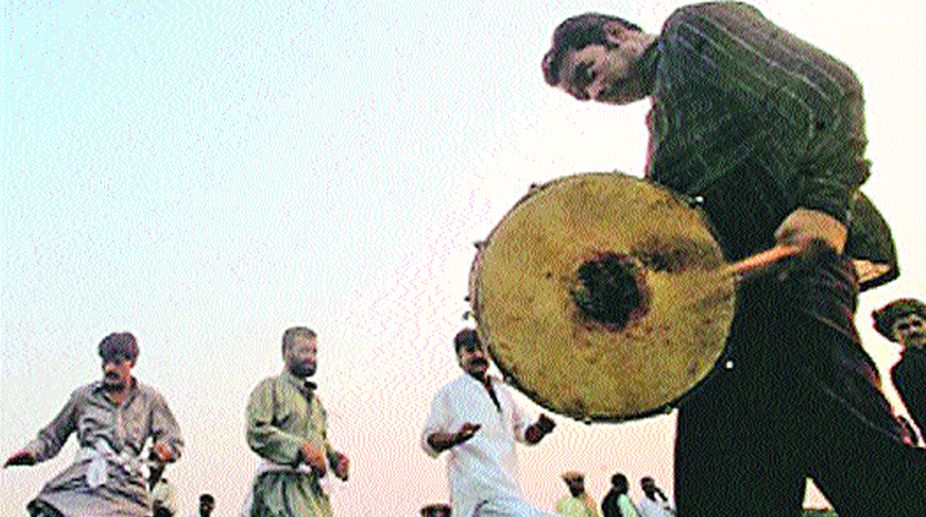Afghans
Many of us have been shaken in our childhood by Rabindranath Tagore’s heart-rending short story depicting the friendship between five- year-old Mini and a dry fruit hawker from distant Afghanistan. The story has helped shape a romantic and friendly image of Afghans in Bengal and in general across India. Towards late 19th century, while British were fighting over the control of Afghanistan, Kabuliwalas had started flocking to the capital of East India Company empire for trading purposes.
Advertisement
They started door to door selling of their wares which included spices, dry fruits and attar (perfumes) and lending the money they earned to small businesses. Slowly they diversified their business which includes the recent setting up of several tailoring shops in the city’s Nakhoda Masjid area.
Ironically Kolkata’s Kabuliwalas (literally meaning people from Kabul) actually hail from Paktia and Paktika districts. Their business started shrinking in 1980s following the Naxal movement and resultant industrial decline of West Bengal which shrank their client base. In addition, several microfinance companies now offer funds at low interest rates. Thus the Kabuliwalas are forced to take to modern businesses like construction and textile in the interest of survival.
Identifiable through their distinct features of piercing eyes and rugged face, Kabuliwalas have made Kolkata their new home. The Kabuliwalas can often be found enjoying traditional Afghani food in the city’s restaurants primarily Shiraz, Sabir’s and Kabul, especially during breakfast.
Breakfasts during winters are laden with Afghani delicacies like the zabaan (tongue), kalla (jaw), paya (legs) and magaz (brain) of the gosht (meat). Around 2,000 Kabuliwalas reside in Kolkata now and Afghani customs and traditions link the community together. The Maidan is often witness to the Kabuliwala’s traditional Pashtun Attan dance, passionate kite flying sessions as well as Anda Kushti or hard-boiled egg fights.
Most of them have stuck to their mother tongue — authentic and fluent Pashto. The Khan Kothis near present day New Market has a distinctive Afghan home feeling completed with carpeted floor, drinking green tea or kahwa, eating meals from the same platter and absence of women in public. Men sport the traditional Khan robes for all Friday prayers and special occasions like Eid.
However despite being here for generations and some having never been to Afghanistan, quite a few of these Kabuliwalas are stateless without valid Indian passports. Instead they have made Kolkata their home away from home. Pakhtunistan maybe their watan, but Kolkata has become their mulk.
Anglo Indians
Aparna Sen’s iconic movie 36 Chowringhee Lane poignantly depicts the story of the Anglo-Indians, abandoned by the British and isolated in post-Independent India and in a deeper sense, an universal reality of old age loneliness plaguing the community. Owing its origin to the British Empire with an eclectic mix of Indian and western customs, Anglo Indians have been thriving in the city since the last two centuries. Unofficial sources say around 30,000 Anglo Indians live in Kolkata, primarily in Central Kolkata and Ballygunge.
Be it laying of railway tracks, planting of telegraph poles or building housing colonies or excelling in sports, they have done it all in an attempt to build a modern India. Leslie Claudius was a key member of Indian hockey team which won Olympic gold in 1948, 1952 and 1956. The Anglo Indian Sergeant Contingent was the pride of Calcutta Police and a regular at any parades or displays.
The Independence in 1947 made the community feel secure and a significant chunk moved out of the country in search of greener pastures. The remaining continued to hold high ranking jobs especially in Defence, Administrative Services and Education and slowly got assimilated into their Indian identity. Their educated and liberated women were the first to have volunteered for the job of air hostess and first community to take up independent careers (we may refer to Ray’s classic Mahanagar in this context).
Way back in 1967, Neil O’Brien conducted the first quiz competition in Calcutta as Eddie Hyde Memorial Quiz and the rest is history. Many of the community members from across India have selected Calcutta as their home base post retirement especially in areas like Dharmatala, Bow Bazar, Ripon Street. Christmas is the biggest festival in the calendar and preparations start much in advance with bottling of grape wine and fruit cake mixing.
Bow Barracks remains the most well-know nresidential quarters of Anglo Indians in this city. Built as garrison’s mess for American soldiers posted in Kolkata during World War II, this was handed over to Anglo Indian families later on. This is currently home to more than 80 Anglo Indian families and Christmas celebrations are attended by people from all walks of life irrespective of religion.
Calcutta Rangers Club continues to be the focal point of the community get-togethers. Founded in 1896, this club has nurtured some of the finest hockey, basketball and rugby teams. Sunday mornings see the community gather for the Mass, assemble at the club before heading off for lunch of kofta curry and yellow rice. There are places that serve Anglo Indian items like jalfrezi and pantras, however restaurants dedicated to their cuisine are rare.
The boom in service industry in recent times has opened up different frontiers for job opportunities for them and stemmed the migration that was rampant in the 80s. Earlier, the community was too Anglicized for mainstream sticking to the British ways. But now they have adopted customs, language, and even local clothing, and can speak local languages with elan. The Anglo-Indian way is a unique and rich cultural tradition which has found a new way to redefine themselves and thus merging into mainstream.











